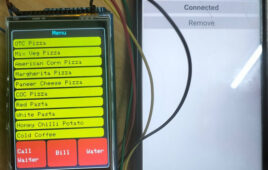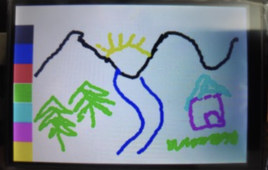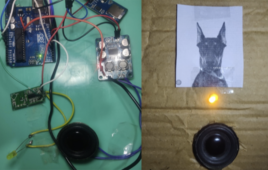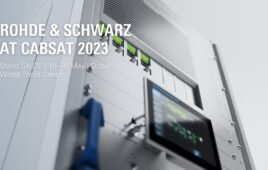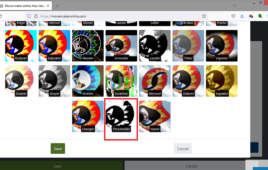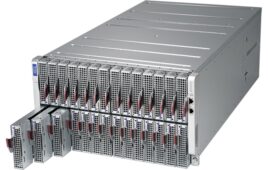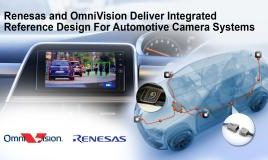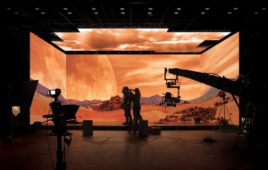Digitalization has significantly shifted us toward a paperless society, impacting both personal and professional lives. Take restaurants, for example, where many establishments now offer digital menus. Providing a digital option offers several advantages to restaurant owners, their customers, and the environment. It reduces paper waste, allowing for an interactive experience and real-time updates for the…
How to build a paint application using Arduino
In this project, we’ll build a paint application on Arduino UNO/Arduino Mega that runs on a 3.5-inch TFT touchscreen display based on the ILI9486 driver. The ILI9486 touchscreen has a display resolution of 320×480 pixels. Using a stylus, you can draw, paint, and write on it (even in your own handwriting ). Required components Arduino…
How to design a security system that sounds like a guard dog
It’s been said that one of the best home security systems is owning a dog. In this do-it-yourself (DIY) circuit, we’ll design a unique system that lets you take advantage of a guard dog for security without ever needing to walk or feed it. This DIY system “barks” like a dog whenever motion is detected…
Rohde & Schwarz to showcase the future of broadcasting at CABSAT
Rohde & Schwarz, a global provider of broadcast distribution, is once again exhibiting at CABSAT (stand S1-I20, Dubai World Trade Centre, May 16-18, 2023). The company will take the opportunity to showcase its commitment to meeting industry expectations for advanced functionality, high availability, reliability, and support. It will also show how its products and solutions…
How to play a video on an SSD1306 OLED
Small organic light-emitting diode (OLED) displays are commonly used in embedded devices. This is because OLEDs generally cost the same as character LCDs but feature a better user interface (UI) and user experience (UX). Typically, embedded OLED screens are used to display textual messages, but what about videos? For example, is it possible to playback…
Supermicro collaborates with Infineon on green computing
The new dimension of digitalization is enormous and global data volumes will only multiply exponentially in the future with video streaming, virtual conferences, cloud services, cryptocurrencies, and many other digital applications. Experts estimate a 146-fold increase in data in just 15 years. According to the U.S. International Trade Commission, 175 zettabytes (≙ 175,000,000,000,000,000,000,000 bytes) of…
STMicroelectronics updates its TouchGFX suite for enhanced user experiences
STMicroelectronics has released TouchGFX Version 4.18 for user-interface development with STM32* microcontrollers (MCUs), adding video playback, enhanced tools for multi-developer collaboration, and support for new X-NUCLEO display kits. By allowing playback of Motion-JPEG (MJPEG) video files, TouchGFX brings extra pizzazz to small devices like home-automation products, wearables, medical devices, and industrial sensors. It also provides rich features such…
Renesas and OmniVision offer reference design for automotive camera systems
Renesas Electronics Corporation, a supplier of advanced semiconductor solutions, and OmniVision Technologies, a developer of advanced digital imaging solutions, have introduced an integrated reference design for a high-definition automotive camera system. The new design features Renesas’ recently introduced Automotive HD Link (AHL) technology that transmits high-definition video over low-cost cables and connectors. The AHL components…
Samsung to build first virtual production studio with CJ ENM
Samsung Electronics announced a new partnership with CJ ENM, one of Asia’s top entertainment and media group (behind the Oscar-winning film, Parasite) to build a virtual production studio to spearhead the production of future video content. Combining its cutting-edge Micro LED technology with CJ ENM’s globally recognized content production of television series and films, Samsung is…
Renesas enables high-definition automotive video using low-cost cables & connectors
Renesas Electronics Corporation, a supplier of advanced semiconductor solutions, recently introduced its new Automotive HD Link (AHL) technology that enables auto manufacturers to deliver high-definition video over low-cost cables and connectors that typically support standard-definition video. HD video is increasingly important in car safety systems for object recognition functionality. Renesas is a provider in the…
Controlling Audio Volume & Tone with a Remote Control
Here is the project of controlling audio volume and audio tone (bass and treble) with a remote control designed using microcontroller AT89S52.It is a mono audio controller and to make it stereo similar circuits have to be made for the both LEFT and RIGHT channels. I have not connected the components in a PCB…

